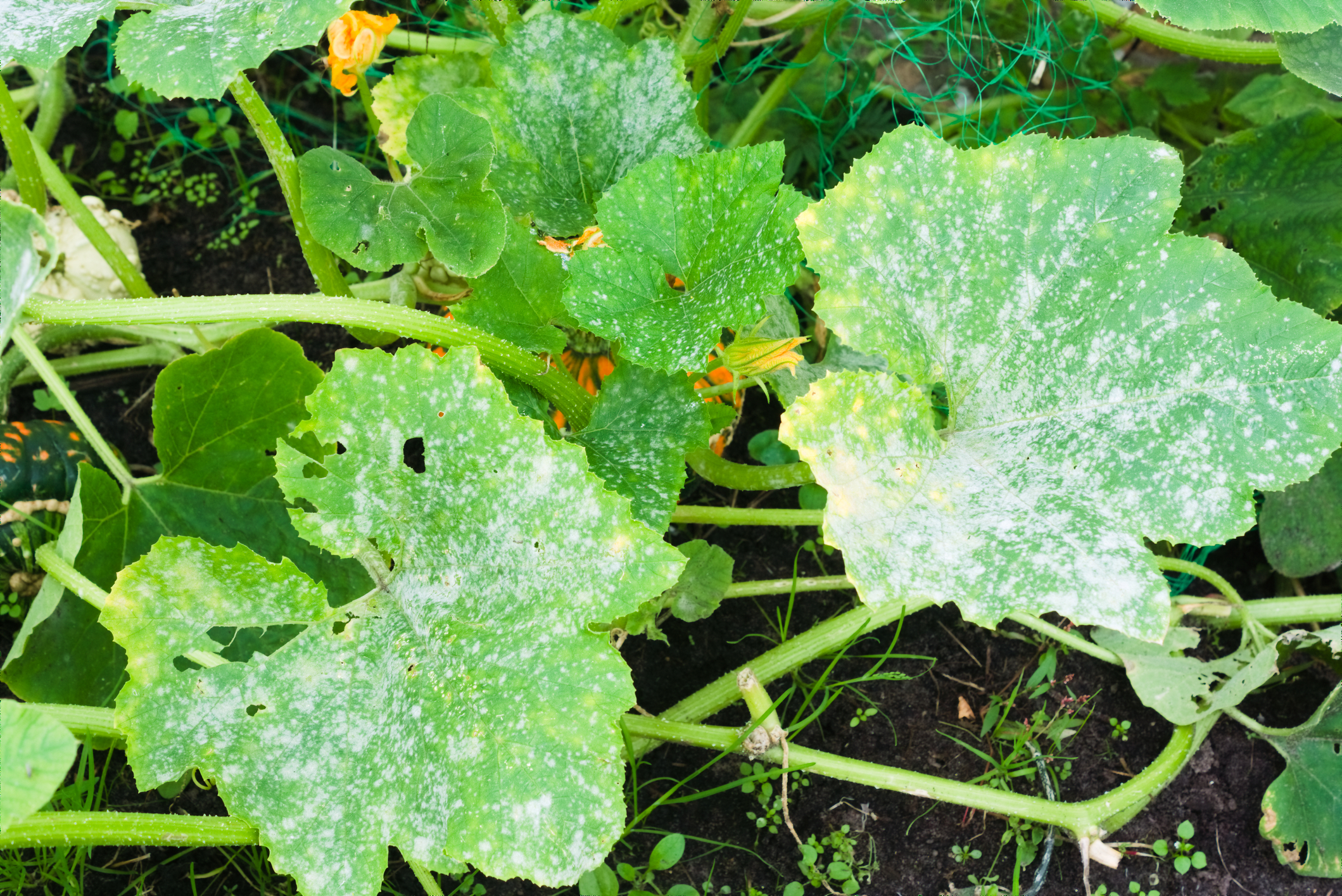With non-stop rains in New Jersey over the past three weeks, your garden has probably gone from a desert to a jungle in a short period of time. After a monthlong drought, New Jersey was hit with massive rain storms in late June and early July leading to another problem.
Powdery mildew.
Powdery mildew, a common fungal disease, can quickly turn a flourishing garden into a nightmare. Recognizable by its white, powdery coating on leaves, stems, and even flowers, this plant disease can weaken and deform plants if left untreated.
Before launching into battle, it’s important to correctly identify powdery mildew. Look for the characteristic powdery white or gray patches on the surface of leaves, accompanied by distorted growth and potential yellowing or browning of affected foliage.
Poor air circulation contributes to the growth and spread of powdery mildew. Prune overcrowded branches and remove dense vegetation to allow for better airflow. Additionally, avoid overhead watering, as damp foliage creates an ideal environment for fungal growth.
Water your plants at the base to keep the leaves dry. This reduces the chance of water splashing onto the foliage, minimizing the conditions favorable for powdery mildew. Water in the morning to allow any moisture on leaves to dry during the day.
At the first sign of powdery mildew, act swiftly. Prune and discard infected leaves, stems, or flowers to prevent the disease from spreading further. Remember to disinfect pruning tools between cuts to avoid spreading the fungus.
Several organic solutions can effectively combat powdery mildew. One option is a mixture of baking soda and water (1 tablespoon of baking soda per 1 quart of water). Spray this solution onto affected plants every 7-10 days. Another option is neem oil, a natural fungicide. Dilute neem oil as directed and spray it on infected plants.
Believe it or not, diluted milk can help combat powdery mildew. Mix 1 part milk with 9 parts water and spray the solution onto affected plants every 1-2 weeks. The proteins in milk have antifungal properties that can hinder the growth of powdery mildew.
Sulfur-based fungicides are effective in controlling powdery mildew. Look for a product specifically formulated for powdery mildew and follow the instructions carefully. Keep in mind that sulfur can be harmful to certain plants, so check for any plant-specific restrictions before use.
Choose powdery mildew-resistant plant varieties whenever possible. Many plant breeders have developed mildew-resistant cultivars that are less susceptible to the disease. Research and select plants that have a proven track record of resistance.
Maintain a clean and tidy garden to discourage powdery mildew. Remove fallen leaves and debris that can harbor fungal spores. Rotate crops yearly to prevent the buildup of fungal pathogens in the soil. Also, avoid overcrowding plants, as this can promote humidity and fungal growth.
If powdery mildew persists or spreads extensively despite your efforts, consult with gardening experts, local extension services, or plant clinics for professional guidance tailored to your specific region and plant types.
Powdery mildew may be an unwelcome visitor in your garden, but armed with these strategies, you can fight back and restore vitality to your plants. Remember to act promptly, practice good garden hygiene, and use the appropriate organic or chemical remedies. With a little perseverance and a proactive approach,

